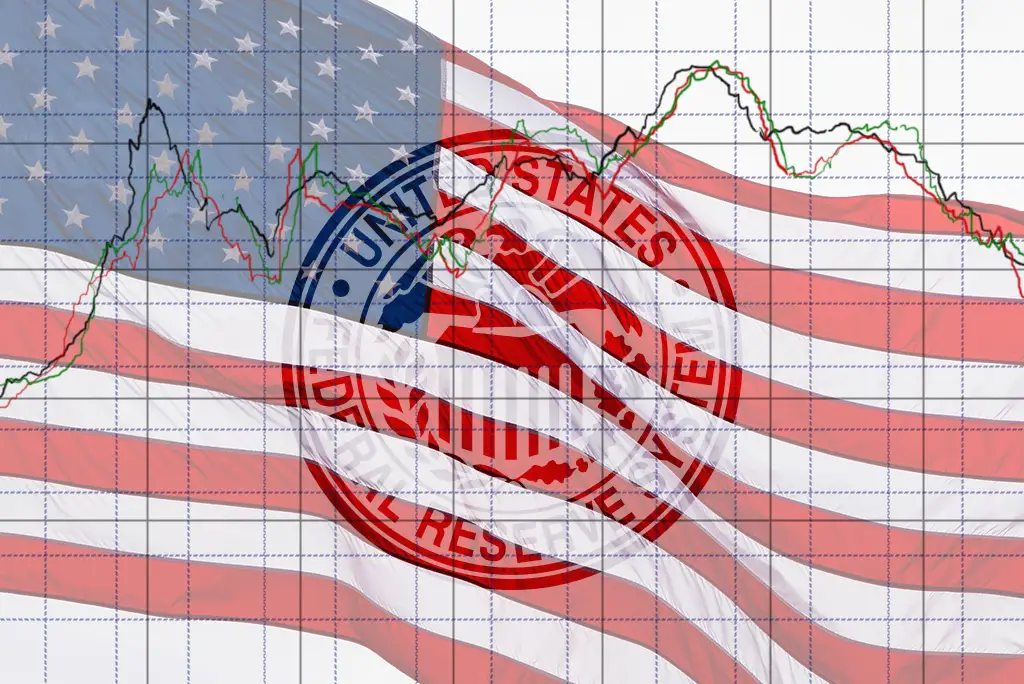On Wednesday, Federal Reserve policymakers will revise their projections for benchmark interest rates, potentially influencing a third consecutive year of the US bond market declines.
Although occasionally downplaying dot plot forecasts, Chairman Jerome Powell notably relies on them due to limited verbal policy guidance. His and his colleagues’ avoidance of explicit policy direction makes dot plot forecasts stand out.
The dot plot hinges on two primary inquiries: whether policymakers maintain a year-end 25 basis point rate hike expectation and the extent of anticipated 2024 easing.
This significance becomes pronounced during the September 19-20 policy meeting, as the Fed is widely anticipated to maintain current interest rates.
Stephen Bartolini, a portfolio manager at T. Rowe Price, highlights the September Fed meeting’s central theme, “the duration of ongoing policies.”
This week’s gathering holds particular intrigue and is expected to generate significant discussion about the US bond market. The gathering is poised to become a focal point of market analysis and critique.
Shifting Fed Expectations: 1% Point Cut to Potential Rate Hike
In June, they foresaw a substantial 1 percentage point rate reduction. The consumer price index released last Wednesday added complexity to officials’ responsibilities. Despite a general slowdown in recent months, core monthly increases, excluding volatile energy and food, surged in August.
The report probably strengthened most Fed policymakers’ inclination to retain the prospect of a 2023 rate hike in the dot plot, as noted by Krishna Guha and Marco Casiraghi from Evercore ISI.
According to their analysis, it may lean towards three 2024 cuts rather than four.
US Bond Market Shifts Amid Diminished 2024 Rate Cut Expectations
Expectations of a 2024 rate reduction in the US bond market have diminished due to worries that the Federal Reserve will prolong higher interest rates.
The US bond market’s concerns center on the Fed’s intention to maintain elevated rates. It is leading to the revision in 2024 rate cut projections.
Swaps linked to Federal Reserve actions recently reduced interest rates by approximately 100 basis points, down from 150 points earlier this year.
The US bond market traders anticipate the effective federal funds rate, presently at 5.33%, to decrease to roughly 4.49% by the conclusion of 2024.
Caution from Bank of America: Treasury note sell-off
Bank of America strategists issued a cautionary note, suggesting a potential sell-off in the two-year Treasury note.
This scenario hinges on policymakers maintaining their 2023 rate hike forecast while reducing their 2024 cut projection.
Such an outcome could disrupt investors’ expectations of a steeper yield curve for the US bond market. Thus, it is characterized by a diminished premium between the two-year and 10-year yields.
Late Friday, the US bond market two-year Treasury yields hovered just slightly below 5%, approaching levels close to the 16-year high recorded in July.
The 10-year Treasury note yield exceeded 4.3%, maintaining an inverted yield curve since mid-2022 due to the Federal Reserve’s unusually forceful tightening measures and recession anticipations.
Rate Cut Forecasts and Treasury Yield Projections
UBS Global Wealth Management’s Leslie Falconio anticipates a modest 75 basis point rate cut projection in next year’s dot plot.
Her forecast could trigger a more widespread reassessment of market expectations concerning the Federal Reserve’s future actions.
Chairman Powell of the Federal Reserve is unlikely to reduce rates prematurely, potentially waiting for several months of sub-3% unemployment and inflation.
John Velis, a currency and macro strategist at Bank of New York Mellon Corp., foresees multiple influences propelling the 10-year Treasury yield to 4.5% by year-end.
He asserts that a clear commitment from Fed officials, emphasizing their long-term stance against rate cuts in their forecasts, could swiftly drive up gold prices.
Fed Projections and Interest Rate Outlook
As indicated by Bloomberg Indexes, the broader market concluded its fourth consecutive month with losses, signifying negative trends.
This year, the gauge remains essentially stagnant after a 12.5% decline last year. It is a departure from historical annual data since the early 1970s and a source of investor dissatisfaction.
Another significant Fed projection to monitor on Wednesday is the median estimate of the long-term policy rate, which has consistently been at or below 2.5% since 2019.
This forecast is anticipated to introduce the committee’s inaugural perspective in 2026, potentially offering investors valuable long-term insights.
The five-year overnight index swap rate, serving as a market gauge for the Fed’s extended interest rates, currently stands at approximately 3.72%. It marks an increase from its sub-3% level in May.
John Bellows, a portfolio manager at Western Asset Management. It indicates a prevailing market consensus that 3.5% serves as the bottom limit.
This implies that, in the future, investors may witness the Federal Reserve lowering interest rates to a minimum of 3.5%.
